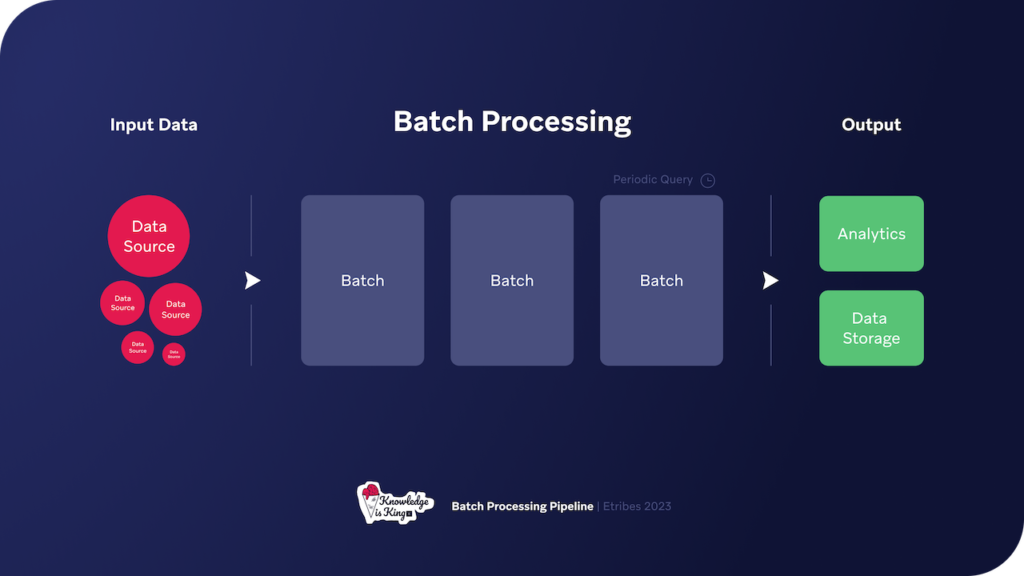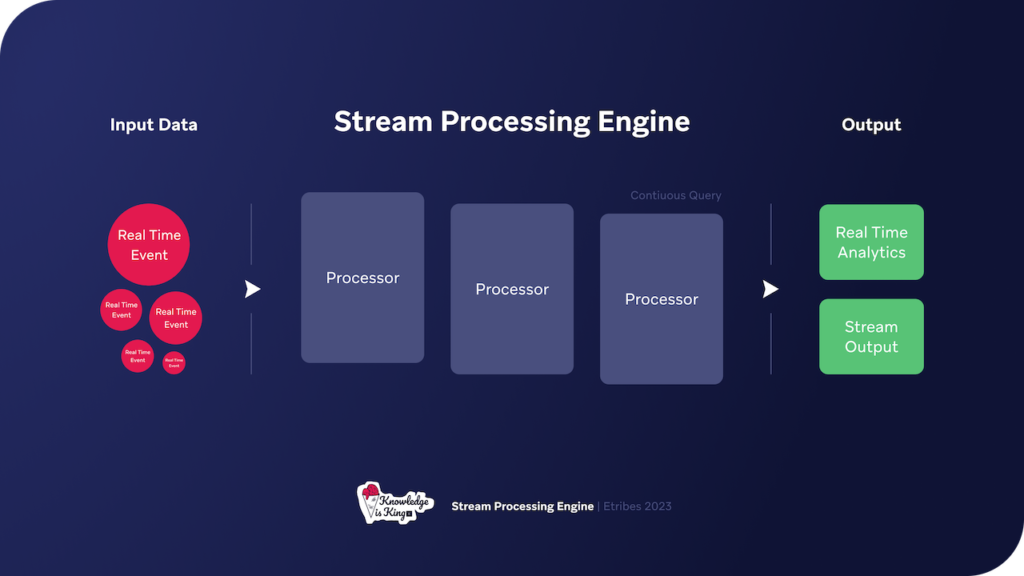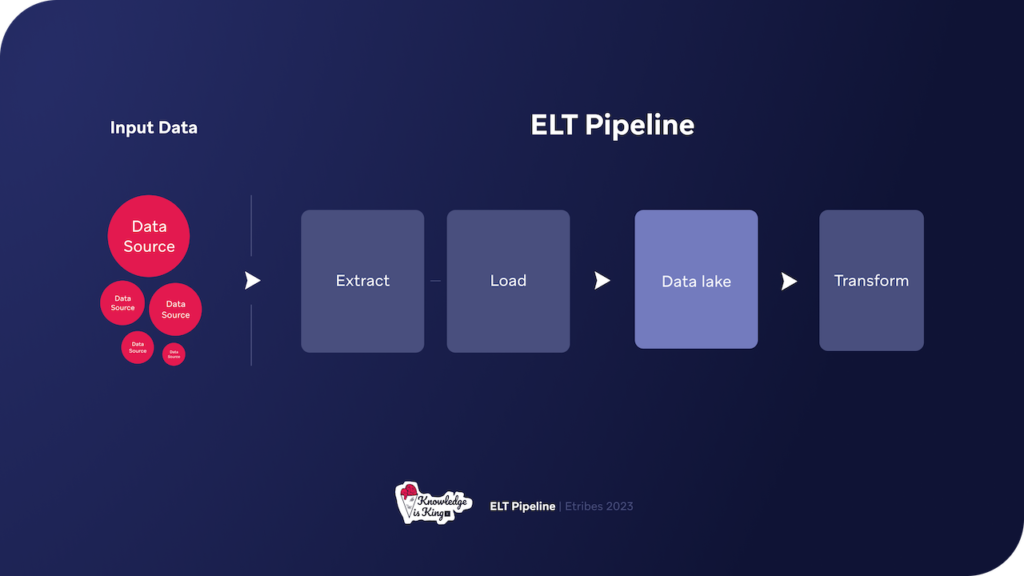Data pipeline: How e-commerce companies can maximize their potential with the right data processing

About the author
Hi, I’m Yubraj Ghimire and I work as a Data Architect at Etribes. In my day-to-day work, I help our clients with the fundamental setup of data processing systems to continuously improve their e-commerce stores. This includes establishing data pipelines, web store setup as well as technical analysis, requirements engineering, task management and dev contribution.
If you have any other questions or ideas about this blog post, feel free to message me using the contact form below or directly on LinkedIn!
25. April 2023 / Yubraj Ghimire
Intro
“If you torture the data long enough, It will confess to anything” — Ronald Harry Coase
Particularly during the COVID-19 pandemic, we experienced firsthand how valuable data can be in understanding and responding to a crisis. But even today, data is an important tool for everyday decision making and problem solving.
Data are all kinds of information that we can collect, store and analyze. It comes in many different forms, such as numbers, text, images, videos, sounds, or charts. Basically, everything around us is data.
In this blog post, I’ll give you an in-depth look at the topic of data pipelines. I will explain why the data pipeline is essential for e-commerce companies today, what advantages it offers and what different types exist. I’ll also give you a practical example of how you could design the data pipeline architecture for your e-commerce store.
What is a data pipeline?
“The world is one big data problem.” — Andrew McAfee (MIT)
Let’s explain this using the example of drinking-water supply: In the past, people in small villages and communities had to walk miles to fetch drinking water from various sources such as rivers, wells or ponds. This activity was tedious and time-consuming, but it worked. Over time, the population grew and people wanted a better quality of life. This is how the first water pipelines came into play. People gradually had access to clean drinking water directly in their homes, without having to travel long distances every day. The so-called water pipeline fundamentally changed the lives of these communities, making life easier and more convenient than ever before.
You can imagine a data pipeline like a water pipeline. Just as a water pipeline has a water source and a cleaning mechanism to make the water drinkable, a data pipeline has the data producers who create or provide the data. Likewise, there are data processors that clean and process the data so it can be used for different purposes. Just as people drink clean water, data consumers use the processed data for analytics or decision making.
Why are data pipelines so important for online businesses?
“We are surrounded by data, but starved for insights.” — Jay Baer
Companies with an online presence generate huge amounts of data. From customer behavior on their websites to sales data from online marketplaces. To make sense of this data and make informed business decisions, companies need an efficient way to extract, transform, store and analyze it. Only then they can process it further in e.g. Business Intelligence, Artificial Intelligence, ML, etc.
Data pipelines offer companies a way to do just that. By automating data collection and processing, companies can save time and resources while improving the accuracy of their data analysis. This, in turn, can lead to better business decisions and higher performance.
What are the benefits of building a data pipeline for e-commerce businesses?
#1 - Improved decision making
A data pipeline provides a steady flow of accurate and real-time data that e-commerce businesses can use to make informed decisions about inventory, pricing, marketing, and more.
#2 - Increased efficiency
By automating data collection, processing, and analysis, a data pipeline can help e-commerce businesses save time and reduce the risk of errors caused by manual data processing.
#3 - Better customer experience
By analyzing customer data in real time, e-commerce companies can identify patterns and trends in customer behavior that help them personalize their marketing campaigns, drive their customer segmentation, improve their product recommendations, and enhance the overall customer experience.
#4 - Improved scalability
A data pipeline can be scaled easily to handle large volumes of data, making it easier for e-commerce companies to manage growth and respond more flexibly to changes on demand.
#5 - Increased competitiveness
New insights from data analytics enable e-commerce businesses to gain a competitive edge in their industry by identifying new market opportunities, optimizing pricing strategies, and improving supply chain management.

Data pipelines are an essential part of modern business operations. By automating data collection and processing, companies can save time and resources while improving the accuracy of their data analysis.
Yubraj Ghimire, Data Architect Etribes
What different types of data pipelines do exist?
There are different types of data pipelines, each with its own characteristics and use cases. I have listed and outlined some of the most common types for you here:
What could the data pipeline architecture for an e-commerce store look like?
The architecture of a data pipeline for an e-commerce store varies depending on the specific requirements and goals of the business. Below you can find one possible variant. If you have detailed questions for your specific structure, feel free to ask me via the contact form below.
Step 1
Data collection
The first step in the data pipeline is to collect data from various sources, such as the e-commerce store website, mobile app, marketing channels, customer support systems, PIM, or the likes.
Step 2
Data processing
After the data has been collected, it must be processed to gain insights and make business decisions. Various tools and techniques can be used for this purpose, e.g. data modeling, data mining or machine learning.
Step 3
Data storage
Once the data has been processed, it needs to be stored in a central location, such as a data warehouse. This way, the data can be easily retrieved and analyzed.
Step 4
Data Analysis
The processed data is then analyzed to uncover insights and trends. This may include analysis of customer behavior, sales trends, inventory levels, and much more.
Step 5
Data Visualization
At the end, the findings and trends are presented in a visual format, such as dashboards or reports, to allow business leaders make informed decisions.
Conclusion
Data pipelines are an essential part of modern business operations. By automating data collection and processing, companies can save time and resources while improving the accuracy of their data analysis. With different types of data pipelines, businesses can choose the one that best fits their needs and helps them gain the insights they require to drive growth and success.



